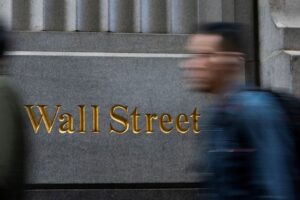Market Dynamics: Navigating a Hawkish Fed and Global Economic Uncertainty
As we look toward the horizon of the U.S. and global markets, the recent moves by the Federal Reserve have raised concerns among investors about a prolonged period of heightened interest rates. What does this mean for the broader financial landscape as we near the end of the year?
The Hawkish Fed Stance
The Federal Reserve’s decision to enact a “hawkish cut” last Thursday has set the stage for potential volatility in the equity markets. While the quarter-point cut was anticipated, the Fed’s signals indicate that the 4% policy rate may serve as a floor for the coming year. This adjustment leaves little room for monetary easing until at least mid-2025.
The repercussions of these changes have already been felt across various financial markets. The dollar’s rise to its highest level in over two years has created a challenging environment for both emerging and developed market currencies. Cryptocurrencies are feeling the heat too, as investor sentiment shifts towards a more risk-averse posture.
Inflation Outlook and Economic Projections
The Fed has increased its median inflation forecast for next year, now expecting 2.5% inflation, while nudging GDP growth estimates up a mere tenth to 2.1%. Additionally, policymakers have adjusted their rate forecasts for the next two years, indicating a more cautious approach to further cuts, with expected rates of 3.9% and 3.4% for the next two years.
Such adjustments not only rewrite economic expectations but also signal to the market that the era of easy money might be behind us. Chair Jerome Powell emphasized this new phase, assuring investors that the Fed will be cautious about future cuts, reinforcing the idea that significant shifts may be a long way off.
Market Reactions: A Tempestuous Landscape
The immediate aftermath of the Fed’s announcement saw significant turbulence in the stock markets. The S&P 500 and the Dow Jones experienced their largest one-day percentage declines since early August, while the Nasdaq reflected its sharpest drop since July. The small-cap Russell 2000 suffered a staggering 4.4% decline, marking its worst day since June 2022.
Additionally, Treasury yields have surged, with the 10-year and 30-year yields rising to levels not seen since May, reflecting deeper concerns about financing costs and future economic growth. Notably, the 2-10 year yield curve steepened, indicating growing apprehension about the economic outlook.
Global Context: A Broader Economic Challenge
The Fed was not the only central bank making headlines recently. The Bank of Japan’s decision to maintain its interest rates without clear guidance on future adjustments has further pressured the yen against the strengthened dollar. Meanwhile, the U.K. has shown unexpected resilience, with the pound gaining ground following hawkish indicators from the Bank of England.
In contrast, Brazil’s economy is facing significant challenges, with the real tumbling to record lows amid concerns surrounding government fiscal policies and increasing debt levels. The alarming drop in the currency, despite recent interest rate hikes, raises red flags for investors watching the stability of emerging markets.
Investor Sentiment and Future Directions
With year-end approaching, the mix of rising volatility (as indicated by the VIX climbing to a four-month high) and growing concerns over a potential economic slowdown is palpable in investors’ minds. The broader market narrative that U.S. ‘exceptionalism’ amidst a global slowdown might already be priced in has created a cautious atmosphere as we head into 2025.
Investors will need to keep a close eye on upcoming economic indicators and central bank decisions that could provide further guidance. Key data releases today include Q3 GDP revisions, corporate earnings from major players like FedEx, Nike, and Darden Restaurants, as well as pertinent inflation reports from Mexico and Brazil.
As we engage with these unfolding market dynamics, synthesizing diverse economic insights is essential for strategic investment decisions. At Extreme Investor Network, we are dedicated to navigating these complexities to empower investors with unparalleled insights into market trends and opportunities. Stay tuned as we continue to unpack the implications of these significant economic shifts.

